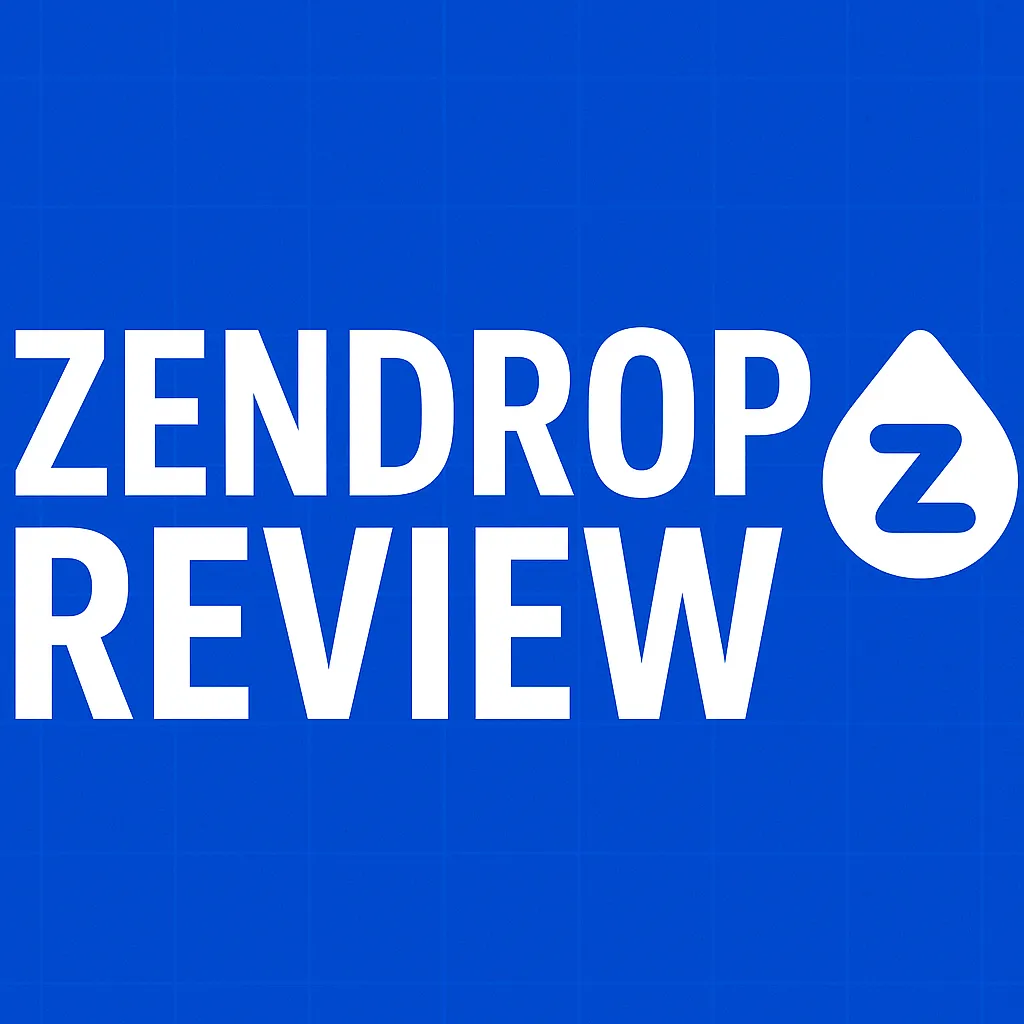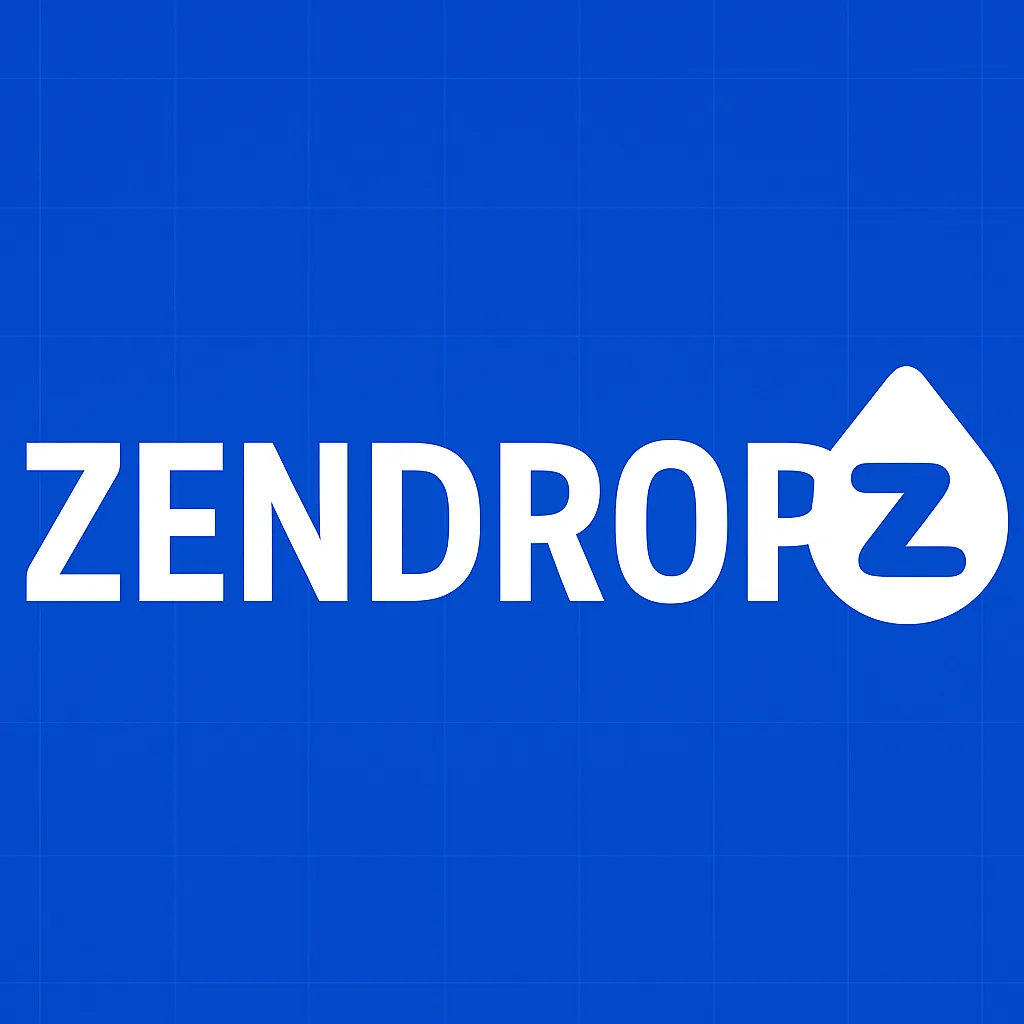Zendrop Review - What To Expect From This Dropshipping Platform?
Welcome to this Zendrop review. If you’ve spent any time researching dropshipping, chances are you’ve come across Zendrop.
It’s often marketed as a beginner-friendly, all-in-one solution that makes building an e-commerce business faster and easier.

Zendrop promises seamless Shopify integration, automated fulfillment, and access to trending products sourced from both U.S. and Chinese suppliers.
On top of that, it offers additional perks like custom branding, print-on-demand options, and even training through something called Zendrop Academy.
The big question, however, is whether Zendrop actually delivers on its promises. While the platform is packed with features that sound appealing, user reviews reveal a more nuanced picture.
Some people swear by its simplicity and helpful support, while others warn about fulfillment issues and pricing concerns.
That makes it important to dig deeper and look at both sides of the story before jumping in.
Today, you will learn how it works, what Zendrop Academy adds to the mix, and the main pros and cons you should consider.
I’ll also share what real users have experienced so you can make an informed decision. By the end, you’ll have a clearer idea of whether this is the right tool for you—or if you should consider alternatives.
Free Guide Reveals: Why Most People Never Make REAL Money Online & How To Be The Exception
What Is Zendrop?
Zendrop is a dropshipping and print-on-demand platform designed to streamline the process of selling products online without holding inventory.
The company positions itself as a one-stop shop for entrepreneurs who want to start or scale an e-commerce business with minimal friction.
At its core, Zendrop connects sellers to a catalog of products sourced from global suppliers, primarily in China and the United States.
The platform integrates directly with Shopify, so you can import products, set pricing, and publish them to your store in just a few clicks.
When a customer places an order, Zendrop automatically handles fulfillment, packaging, and shipping on your behalf.
The service also goes beyond the basics of product sourcing. It includes features like custom branding, which allows you to ship products with your own logo and packaging.
There’s also a print-on-demand option for sellers who want to create unique, customizable merchandise.
Combined, these features give you the ability to build not just a store, but a recognizable brand.
Zendrop isn’t just about tools—it also markets itself as an educational partner through Zendrop Academy.
This training hub is aimed at helping sellers learn how to run ads, build stores, and scale profitably.
In theory, this makes Zendrop more than just a logistics service; it’s a platform that wants to teach you how to succeed as well. Whether that holds up in practice depends on your needs and expectations.
Free Guide Reveals: Why Most People Never Make REAL Money Online & How To Be The Exception
How Does Zendrop Work?

The Zendrop workflow is designed to be as beginner-friendly as possible. The process usually starts with linking your Shopify store to the platform.
Once connected, you can browse the Zendrop catalog, which contains thousands of products across different categories.
When you find an item you want to sell, you can import it into your store with a single click, complete with descriptions, pricing, and images.
From there, the automation kicks in. When a customer places an order on your Shopify store, Zendrop automatically processes it with the supplier, manages inventory, and arranges shipping.
This hands-off fulfillment is what attracts many entrepreneurs who don’t want to spend hours dealing with suppliers or manually managing orders.
One of the standout features is Zendrop’s shipping flexibility. With suppliers in both China and the U.S., sellers can sometimes choose faster domestic shipping to avoid the long delays that are common with overseas fulfillment.
This can give a store a competitive edge, especially in markets where customers expect quick delivery.
Beyond fulfillment, Zendrop also offers branding services. You can customize packaging or add thank-you cards to make your store look more professional.
This is something that many traditional dropshipping platforms lack, and it helps bridge the gap between generic reselling and building a recognizable brand.
In addition, Zendrop includes access to its training hub—Zendrop Academy—if you’re on one of the higher-tier plans.
That means you can learn marketing strategies and apply them directly to your store, without needing to seek outside courses.
What Is Zendrop Academy?
Zendrop Academy is an educational platform bundled with Zendrop’s Plus and usage-based plans.
It’s essentially a collection of courses, workshops, and tutorials designed to help users succeed in dropshipping.
The Academy focuses heavily on areas that new sellers often struggle with, such as Facebook advertising, understanding algorithms, building one-product stores, and scaling effectively.
The content is delivered in video format, with lessons taught by industry professionals like Preston Edwards and Jake Tenenbaum.
This gives the Academy a level of credibility, as the instructors have practical experience in the field.
The curriculum is structured to walk beginners through foundational steps, like setting up their first store, while also offering strategies for more advanced users who want to optimize ads and increase sales volume.
A unique aspect of Zendrop Academy is that it’s integrated directly into the Zendrop dashboard.
You don’t need a separate subscription or login—it’s included as part of your existing plan.
This convenience makes it easy to access training while working on your store, rather than juggling multiple platforms.
While the Academy is a nice bonus, it’s worth noting that the content is primarily geared toward sellers who are using Zendrop as their platform of choice.
Much of the advice may still apply to general e-commerce, but the examples and workflows are tailored to Zendrop’s system.
For users already invested in the platform, this can be a helpful resource. For others, it may feel less essential compared to standalone e-commerce courses available elsewhere.
Free Guide Reveals: Why Most People Never Make REAL Money Online & How To Be The Exception
Pros of Zendrop
Zendrop has several strengths that make it appealing, especially for beginners. The first is ease of use.
Its Shopify integration is seamless, and the one-click product import feature saves hours of manual work.
For people who want to get up and running quickly, this simplicity is a big advantage.
Another major benefit is automated fulfillment. Once your store is connected, orders are processed without manual input, reducing errors and freeing up your time to focus on marketing and customer engagement.
Combined with U.S. warehouse options, this system helps cut down on the shipping times that plague many dropshippers using overseas-only suppliers.
The branding options are also worth highlighting. Custom packaging, thank-you cards, and branded inserts allow sellers to create a more professional experience for their customers.
This can lead to repeat business, something that generic dropshipping often struggles with.
Zendrop Academy is another plus. Instead of leaving users to figure things out on their own, Zendrop provides structured training.
For beginners, this guidance can mean the difference between quitting early and actually making progress.
Finally, Zendrop’s customer support consistently earns praise in reviews. Users often mention quick responses and helpful representatives, which can be invaluable when dealing with order issues or learning the ropes.
Cons & Considerations
Despite its strengths, Zendrop isn’t perfect. One common complaint is fulfillment delays.
While the platform promotes faster shipping options, some users still report long wait times or unreliable tracking, especially for items coming from China. This inconsistency can hurt customer satisfaction.
Pricing is another area of concern. Some sellers feel that Zendrop’s product prices are higher than sourcing directly from platforms like AliExpress.
While the trade-off is convenience and automation, it may reduce profit margins, particularly for stores competing on price.
Inventory accuracy can also be an issue. Users have noted that products sometimes appear in stock on Zendrop but are unavailable when orders are placed. This leads to refunds, unhappy customers, and wasted ad spend.
Another drawback is that Zendrop locks some of its features—like Zendrop Academy—behind higher-tier plans.
Beginners on the free tier may find themselves limited unless they upgrade, which could be frustrating for those testing the waters.
Finally, while reviews highlight strong customer support, there are still reports of slow or unsatisfactory responses when dealing with complex issues like refunds or automation glitches.
This inconsistency means you may need patience if problems arise.
Free Guide Reveals: Why Most People Never Make REAL Money Online & How To Be The Exception
Final Verdict: Is Zendrop Right for You?
Zendrop is a strong choice for entrepreneurs who value simplicity, automation, and a structured path to building a dropshipping business.
Its Shopify integration, U.S. shipping options, and branding services make it more advanced than many basic sourcing platforms.
The addition of Zendrop Academy also adds educational value, especially for beginners who want step-by-step guidance without paying for separate courses.
That said, Zendrop is not without its drawbacks. Pricing can be higher than sourcing from competitors, and fulfillment delays may still occur despite claims of faster shipping.
If your business depends heavily on razor-thin margins or relies on absolute fulfillment reliability, Zendrop might not be the best fit.
For beginners who want a straightforward way to start dropshipping, Zendrop can be a worthwhile investment, particularly if you upgrade to a plan that includes Zendrop Academy.
For experienced sellers, the decision may come down to whether the convenience and branding options outweigh potential cost and inventory limitations.
In the end, Zendrop is best suited for those who want a balance between ease of use and growth potential, as long as they’re aware of the challenges and willing to work through them.
FAQ
What is Zendrop Academy?
It’s an educational platform included in Plus and usage-based plans. It offers video lessons on ads, store setups, scaling strategies, and more.
Do I need Shopify to use Zendrop?
Yes, Zendrop is primarily built to integrate with Shopify stores.
Is Zendrop free?
Zendrop offers a free plan with limited features, but most advanced options (including Zendrop Academy) require a paid plan.
How fast is shipping with Zendrop?
Shipping varies by supplier. U.S.-based products can arrive within days, while products from China may take weeks.
Is Zendrop beginner-friendly?
Yes, it’s designed with beginners in mind. The automation, training resources, and support make it easier to get started than sourcing directly from suppliers.
Free Guide Reveals: Why Most People Never Make REAL Money Online & How To Be The Exception